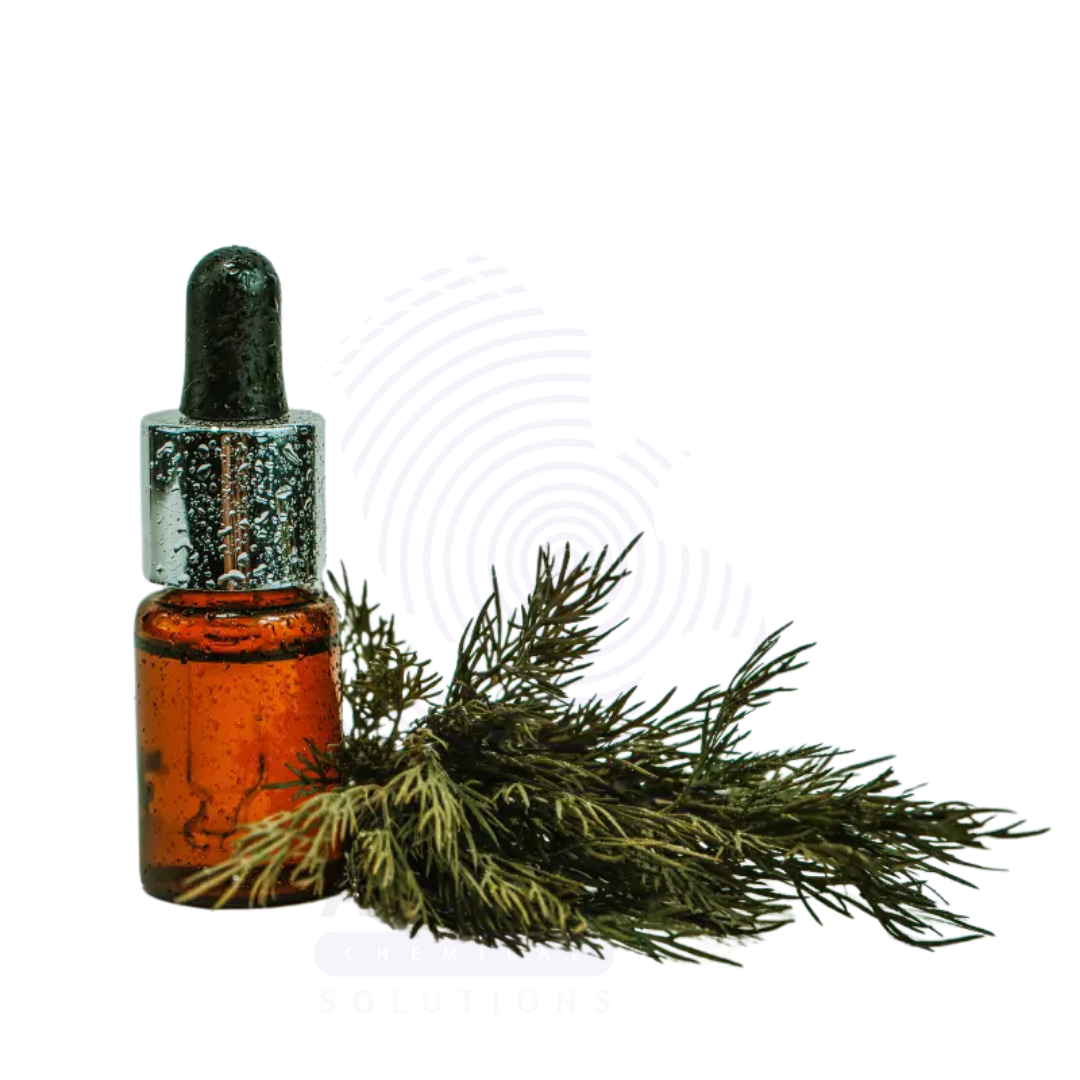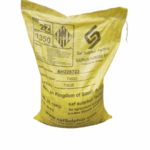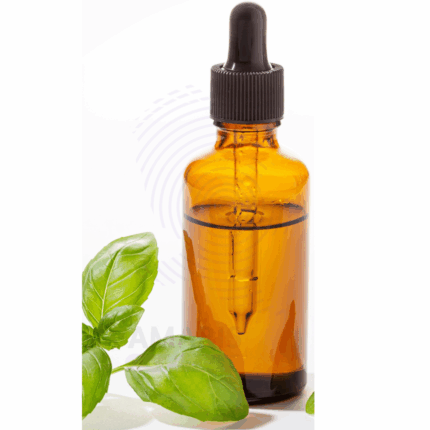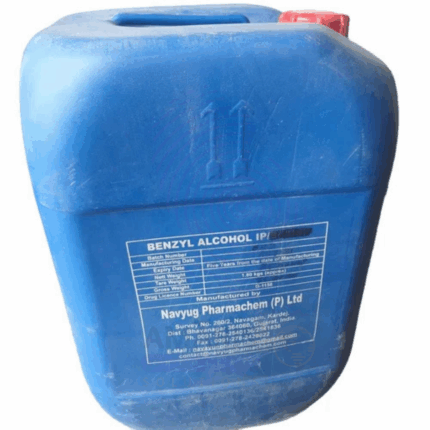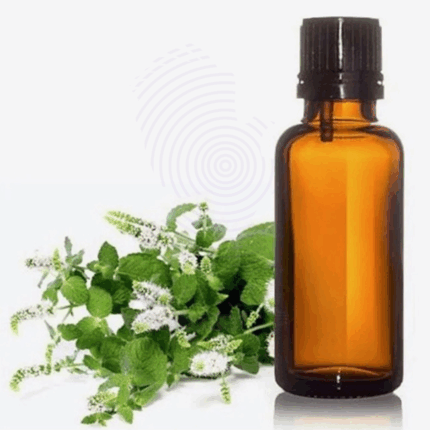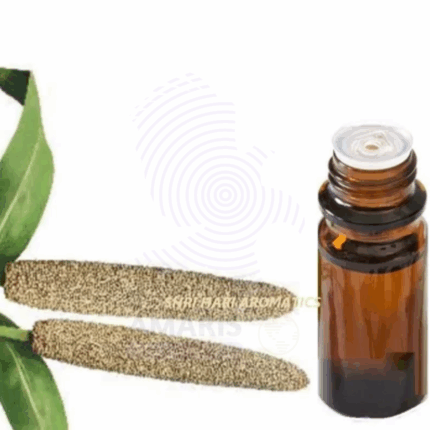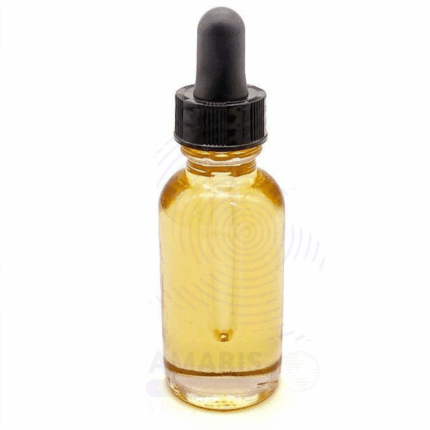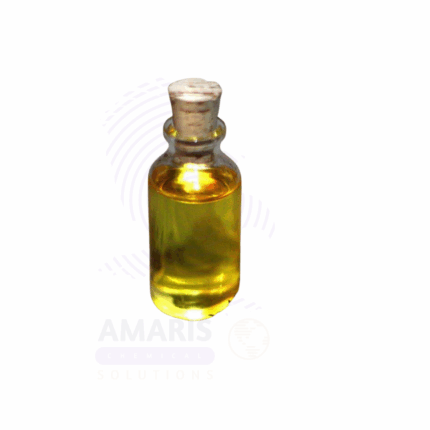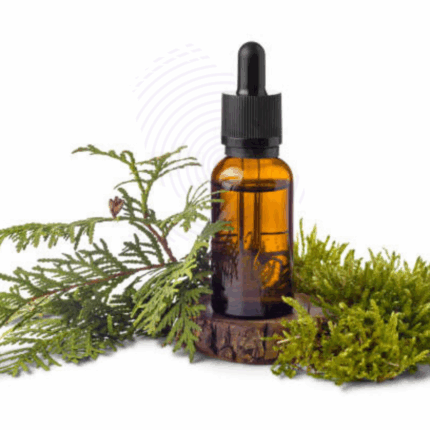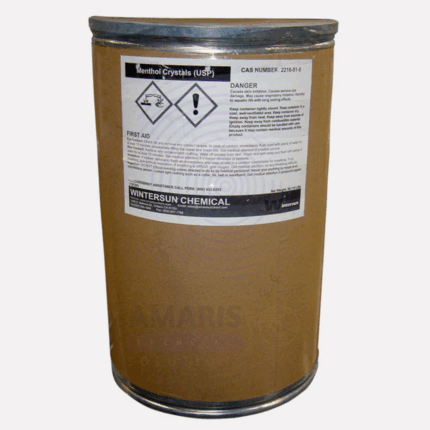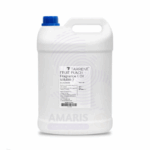
Dill Herb Oil
Dill Herb Oil is a steam-distilled essential oil extracted from the fresh or partially dried herbaceous parts of the Anethum graveolens plant, commonly known as dill. Unlike dill seed oil, which is distilled from the seeds, dill herb oil has a lighter, fresher, and slightly grassy aroma with a faint sweetness and subtle spicy undertones. It is valued for its carminative, digestive, antispasmodic, antimicrobial, and calming properties.
This oil is traditionally used in digestive remedies, culinary formulations, aromatherapy blends, and topical preparations. It’s a common ingredient in natural health products, skincare, and child-friendly wellness products due to its mildness and effectiveness. Dill herb oil is also employed in food and beverage applications and niche perfumery for its green, aromatic character.
Dill Herb Oil
Primary Uses
- Cosmetics and Personal Care
- Used in creams, lotions, and body oils for its soothing and antimicrobial benefits
- Included in baby care products like massage oils and rash creams due to its gentleness
- Added to deodorants and foot sprays for natural odor control
- Used in botanical facial oils and toners for balancing oily skin
- Pharmaceuticals
- Used in digestive formulations such as gripe water and carminative drops
- Applied in balms and liniments for muscle cramps and digestive discomfort
- Employed in traditional herbal medicines for colic, indigestion, and flatulence
- Food and Beverage Industry
- Used as a flavoring agent in pickles, sauces, salad dressings, and condiments
- Included in food-grade digestive tonics and herbal teas
- Adds aromatic flavor to dairy-based spreads and dips
- Aromatherapy & Wellness
- Diffused to promote relaxation and ease digestive upset
- Blended into massage oils for stomach tension and calming abdominal spasms
- Used in children’s aromatherapy blends for its mild and safe profile
Secondary Uses
- Pet Care Products
- Occasionally used in pet calming sprays and digestive support products (diluted and under vet guidance)
- Household Products
- Used in natural air fresheners and cleaning sprays for its fresh, herbal aroma
1. Basic Identification Attributes
- Botanical Name: Anethum graveolens
- Common/Trade Name: Dill Herb Oil
- INCI Name: Anethum Graveolens Oil
- CAS Number: 8006-75-5
- HS Code: 3301.29
- Synonyms: Dillweed Oil, Dill Green Oil
2. Physical & Chemical Properties
- Physical State: Liquid essential oil
- Color & Odor: Pale yellow to light green; fresh, sweet, herbaceous aroma
- Solubility: Insoluble in water; soluble in alcohol and carrier oils
- Refractive Index: 1.480 – 1.500
- Specific Gravity: 0.900 – 0.950
- Main Components: Carvone, limonene, dillapiole
3. Safety & Hazard Attributes
- GHS Classification: May cause skin irritation in concentrated form
- Toxicity: Non-toxic when diluted; avoid excessive internal use
- Exposure Limits: Use within recommended dilution guidelines
- Allergen Information: Contains natural terpenes; patch test recommended
4. Storage & Handling Attributes
- Storage Conditions: Store in a cool, dark, dry place away from sunlight
- Container Type: Amber glass or aluminum containers
- Shelf Life: 24 to 30 months under optimal conditions
- Handling Precautions: Use with clean dispensing tools; avoid moisture exposure
5. Regulatory & Compliance Attributes
- Compliant with IFRA guidelines for fragrance use
- Approved for food use under FCC/FAO standards (when food-grade)
- Produced in GMP-compliant facilities
- Meets safety criteria for baby-safe formulations when properly diluted
6. Environmental & Health Impact
- Biodegradability: Readily biodegradable
- Ecotoxicity: Low risk when used appropriately
- Bioaccumulation: Not expected to bioaccumulate
Safety Handling Precautions
- PPE Required: Gloves and goggles recommended for large-scale handling
- Handling Guidelines: Avoid direct contact with eyes and mucous membranes
First Aid Measures
- Inhalation: Move to fresh air; consult a physician if symptoms persist
- Skin Contact: Wash with soap and water; discontinue use if irritation develops
- Eye Contact: Rinse with water for at least 15 minutes
- Ingestion: Seek medical advice; do not induce vomiting unless directed
Firefighting Measures
- Fire Hazards: Flammable liquid and vapor
- Extinguishing Media: Foam, dry chemical, carbon dioxide
- Special Precautions: Use protective gear; avoid inhaling fumes
- Hazardous Combustion Products: Carbon dioxide, carbon monoxide, aromatic compounds


 Preservatives(food)
Preservatives(food) Flavor Enhancers
Flavor Enhancers Acidulants
Acidulants Sweeteners
Sweeteners Antioxidants
Antioxidants Colorants(food)
Colorants(food) Nutraceutical Ingredients (food)
Nutraceutical Ingredients (food) Nutrient Supplements
Nutrient Supplements Emulsifiers
Emulsifiers
 Collectors
Collectors Dust Suppressants
Dust Suppressants Explosives and Blasting Agents
Explosives and Blasting Agents Flocculants and Coagulants
Flocculants and Coagulants Frothers
Frothers Leaching Agents
Leaching Agents pH Modifiers
pH Modifiers Precious Metal Extraction Agents
Precious Metal Extraction Agents
 Antioxidants(plastic)
Antioxidants(plastic) Colorants (Pigments, Dyes)
Colorants (Pigments, Dyes) Fillers and Reinforcements
Fillers and Reinforcements Flame Retardants
Flame Retardants Monomers
Monomers Plasticizers
Plasticizers Polymerization Initiators
Polymerization Initiators Stabilizers (UV, Heat)
Stabilizers (UV, Heat)
 Antifoaming Agents
Antifoaming Agents Chelating Agents
Chelating Agents Coagulants and Flocculants
Coagulants and Flocculants Corrosion Inhibitors
Corrosion Inhibitors Disinfectants and Biocides
Disinfectants and Biocides Oxidizing Agents
Oxidizing Agents pH Adjusters
pH Adjusters Scale Inhibitors( water)
Scale Inhibitors( water)
 Antioxidants(cosmetic)
Antioxidants(cosmetic) Emollients
Emollients Fragrances and Essential Oils
Fragrances and Essential Oils Humectants
Humectants Preservatives
Preservatives Surfactants(cosmetic)
Surfactants(cosmetic) Thickeners
Thickeners UV Filters
UV Filters
 Fertilizers
Fertilizers Soil Conditioners
Soil Conditioners Plant Growth Regulators
Plant Growth Regulators Animal Feed Additives
Animal Feed Additives Biostimulants
Biostimulants Pesticides (Herbicides, Insecticides, Fungicides)
Pesticides (Herbicides, Insecticides, Fungicides)
 Active Pharmaceutical Ingredients (APIs)
Active Pharmaceutical Ingredients (APIs) Excipients
Excipients Solvents(pharmaceutical)
Solvents(pharmaceutical) Antibiotics
Antibiotics Antiseptics and Disinfectants
Antiseptics and Disinfectants Vaccine Adjuvants
Vaccine Adjuvants Nutraceutical Ingredients (pharmaceutical)
Nutraceutical Ingredients (pharmaceutical) Analgesics & Antipyretics
Analgesics & Antipyretics
 Analytical Reagents
Analytical Reagents Solvents(lab)
Solvents(lab) Chromatography Chemicals
Chromatography Chemicals Spectroscopy Reagents
Spectroscopy Reagents microbiology-and-cell-culture-reagents
microbiology-and-cell-culture-reagents Molecular Biology Reagents
Molecular Biology Reagents Biochemical Reagents
Biochemical Reagents Inorganic and Organic Standards
Inorganic and Organic Standards Laboratory Safety Chemicals
Laboratory Safety Chemicals Specialty Laboratory Chemicals(Special Laboratory Equipment)
Specialty Laboratory Chemicals(Special Laboratory Equipment)
 Demulsifiers
Demulsifiers Hydraulic Fracturing Fluids
Hydraulic Fracturing Fluids Scale Inhibitors(oil)
Scale Inhibitors(oil) Surfactants(oil)
Surfactants(oil) Drilling Fluids
Drilling Fluids
 Dyes and Pigments
Dyes and Pigments Bleaching Agents
Bleaching Agents Softening Agents
Softening Agents Finishing Agents
Finishing Agents Antistatic Agents
Antistatic Agents
 Admixtures
Admixtures Waterproofing Agents
Waterproofing Agents Sealants and Adhesives
Sealants and Adhesives Curing Compounds
Curing Compounds Concrete Repair Chemicals
Concrete Repair Chemicals Anti-Corrosion Coatings
Anti-Corrosion Coatings
 Surfactants(cleaning)
Surfactants(cleaning) Builders
Builders Enzymes
Enzymes Solvents (Cleaning)
Solvents (Cleaning) Fragrances
Fragrances
 Electronic Chemicals
Electronic Chemicals Catalysts
Catalysts Lubricants
Lubricants Photographic Chemicals
Photographic Chemicals Refrigerants
Refrigerants Automotive chemicals
Automotive chemicals Pyrotechnic Chemicals
Pyrotechnic Chemicals
 Biodegradable Surfactants
Biodegradable Surfactants Bio-based Solvents
Bio-based Solvents Renewable Polymers
Renewable Polymers Carbon Capture Chemicals
Carbon Capture Chemicals Wastewater Treatment Chemicals
Wastewater Treatment Chemicals
 Pigments
Pigments Solvents(paint)
Solvents(paint) Specialty Coatings
Specialty Coatings Binders/Resins
Binders/Resins Additives
Additives Driers
Driers Anti-Corrosion Agents
Anti-Corrosion Agents Functional Coatings
Functional Coatings Application-Specific Coatings
Application-Specific Coatings
 Fresh Herbs
Fresh Herbs Ground Spices
Ground Spices Whole Spices
Whole Spices Spice Blends
Spice Blends Dried Herbs
Dried Herbs
 Leavening Agents
Leavening Agents Dough Conditioners
Dough Conditioners Flour Treatments
Flour Treatments Fat Replacers
Fat Replacers Decoratives
Decoratives Preservatives(baking)
Preservatives(baking)
 Plasticizers & Softeners
Plasticizers & Softeners Reinforcing Agents
Reinforcing Agents Adhesion Promoters
Adhesion Promoters Vulcanizing Agents
Vulcanizing Agents Antidegradants
Antidegradants Blowing Agents
Blowing Agents Fillers & Extenders
Fillers & Extenders Accelerators & Retarders
Accelerators & Retarders